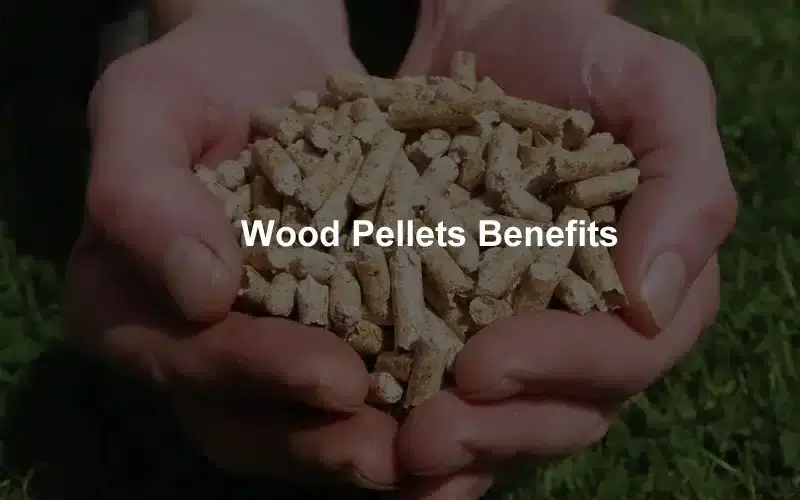
Curious About Wood Pellets? Check Out These Great Benefits
Wood pellets are a renewable resource and are a by-product of the lumber industry. They are made from sawdust, chips and bark from industrial logging operations by pellet making machines, as well as from tree branches that would otherwise be burned or left to decompose. As such, they are considered a biomass fuel source.
What are wood pellets used for?
Wood pellets are used primarily as a fuel source for residential heating. They are also used in commercial applications such as restaurants, hospitals and office buildings. In some cases they are used as an alternative to coal or natural gas because they produce less pollution when burned. They are also used by some farmers as a cheaper alternative to hay bales for animal bedding.
Having said that, let’s take a look at some of the most popular benefits of using wood pellets for home heating.
Environmentally friendly
Wood pellets are a great alternative to traditional heating fuels because they are environmentally friendly. They’re made from waste wood products, like sawdust and shavings, which would otherwise be thrown away. The pellets are compressed into blocks that look similar to large granola or breakfast cereal. Once lit in the furnace or insert, the pellets burn slowly and evenly producing very little ash.
In fact, they produce less smoke than coal, which means you can help save the environment while still enjoying your home’s comfort. The resulting ash can be recycled as fertilizer or used as a soil amendment to improve poor soils.
Easy to store and use and transport
Wood pellets are easy to store in large bins, making them convenient for homeowners who don’t have space for outdoor storage. They can also be stored outside in special bins designed to protect the pellets from moisture damage.
Wood pellets burn more efficiently than other forms of fuel, so you can expect less ash buildup in your chimney over time. This makes it easier to keep your fireplace clean and functional throughout the year.
Because wood pellets are small enough to fit into a large truck bed or trailer, they’re ideal for transporting between locations — whether you’re moving them from one home to another or taking them on vacation with you! You’ll also find it easier to transport them from retailer to retailer if needed, since there’s no need for bulky bags or awkward boxes full of solid fuel sticks like
Wood pellets provide clean burning and consistent heat.
Compared to fossil fuels such as natural gas and propane, wood pellets produce far less nitrogen oxides and hydrocarbons, which contribute to air pollution. The Environmental Protection Agency (EPA) has even stated that wood pellets are one of the cleanest forms of biomass fuel available today.
Wood pellets are an excellent alternative to coal because they burn more efficiently and produce less ash than coal does. With their superior heat output, you can enjoy lower energy bills while still maintaining a comfortable home temperature in the winter months.
Wood pellets are renewable.
Wood pellets are a renewable resource that help you heat your home while also helping the environment. Wood pellets are made from sawdust and other waste products that would otherwise be thrown away or sent to a landfill, but when they’re turned into pellets, they can be burned for fuel. With the help of these wood pellets, the growing energy needs of the world’s population can be met with a renewable source that doesn’t contribute to global warming or deforestation like fossil fuels do.
You save money in your heating bill.
Wood pellets last longer than other types of fuel and produce fewer emissions than fossil fuels. And since you don’t have to bring them inside your home, you don’t have to worry about losing any heat through vents or windows while they’re being stored there. You also won’t have to worry about having enough storage space for all those bags of coal!
Wood pellets are cheaper than most other forms of fuel and can be used to heat your home for less than half the cost of electricity or natural gas. If you opt for wood pellets as an alternative to fossil fuels, you can expect to save between 20% and 30% on your heating bill in comparison to using natural gas or propane.
Low ash content
The ash content of a pellet is determined by how much non-combustible material is left in the pellet after it’s been burned. Wood pellets have an extremely low ash content because they’re made from sawdust and other wood scraps that would otherwise go to waste. When you burn a pellet, only 5% of its weight will be left behind as ash—compared with 25% for coal or 50% for charcoal. This makes them a great choice for homes with sensitive indoor air quality issues.
The majority of the ash found in wood pellets is calcium carbonate, which is non-toxic and not harmful to your health or the environment. The rest of the ash is comprised of minerals like iron, aluminum and magnesium. All these materials can be recycled into new products once they have been burned up during combustion.
Conclusion
Wood pellet fuel has become increasingly popular over the years because of its cheap cost, easy to store and transport, and more environmentally friendly properties. If you are considering switching from traditional heating methods to this fuel source, then you should also consider how to best handle it when installed inside your home.
Talk to An Expert
SHARE THIS POST
Talk to An Expert
